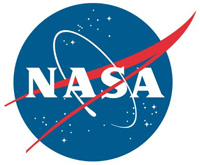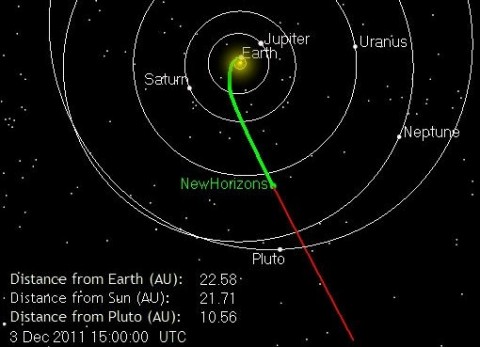 Huntsville, AL – NASA’s New Horizons mission reached a special milestone yesterday, December 2nd, 2011, on its way to reconnoiter the Pluto system, coming closer to Pluto than any other spacecraft.
Huntsville, AL – NASA’s New Horizons mission reached a special milestone yesterday, December 2nd, 2011, on its way to reconnoiter the Pluto system, coming closer to Pluto than any other spacecraft.
It’s taken New Horizons 2,143 days of high-speed flight – covering more than a million kilometers per day for nearly six years—to break the closest-approach mark of 1.58 billion kilometers set by NASA’s Voyager 1 in January 1986.

Now New Horizons, which is healthy, on course and closer to Pluto than Voyager ever came, will continue to set proximity-to-Pluto records every day until its closest approach – about 7,767 miles (12,500 kilometers) from the planet – on July 14th, 2015.
“We’ve come a long way across the solar system,” says Glen Fountain, New Horizons project manager at the Johns Hopkins University Applied Physics Laboratory. “When we launched [on January 19th, 2006] it seemed like our 10-year journey would take forever, but those years have been passing us quickly. We’re almost six years in flight, and it’s just about three years until our encounter begins.”
From New Horizons’ current distance to Pluto – about as far as Earth is from Saturn – Pluto remains just a faint point of light. But by the time New Horizons sails through the Pluto system in mid-2015, the planet and its moons will be so close that the spacecraft’s cameras will spot features as small as a football field.

“I wonder how long it will be until the next Pluto spacecraft — perhaps a future orbiter or lander — crosses this distance marker?” Stern continues. “It could be decades.”
New Horizons is currently in hibernation, with all but its most essential systems turned off, speeding away from the Sun at more than 55,500 kilometers per hour. Operators at the Applied Physics Lab will “wake” the spacecraft in January for a month of testing and maintenance activities.
Click here to see New Horizons current position on it’s way to Pluto.
Check the New Horizons homepage for more information and updates en route to Pluto: http://pluto.jhuapl.edu


